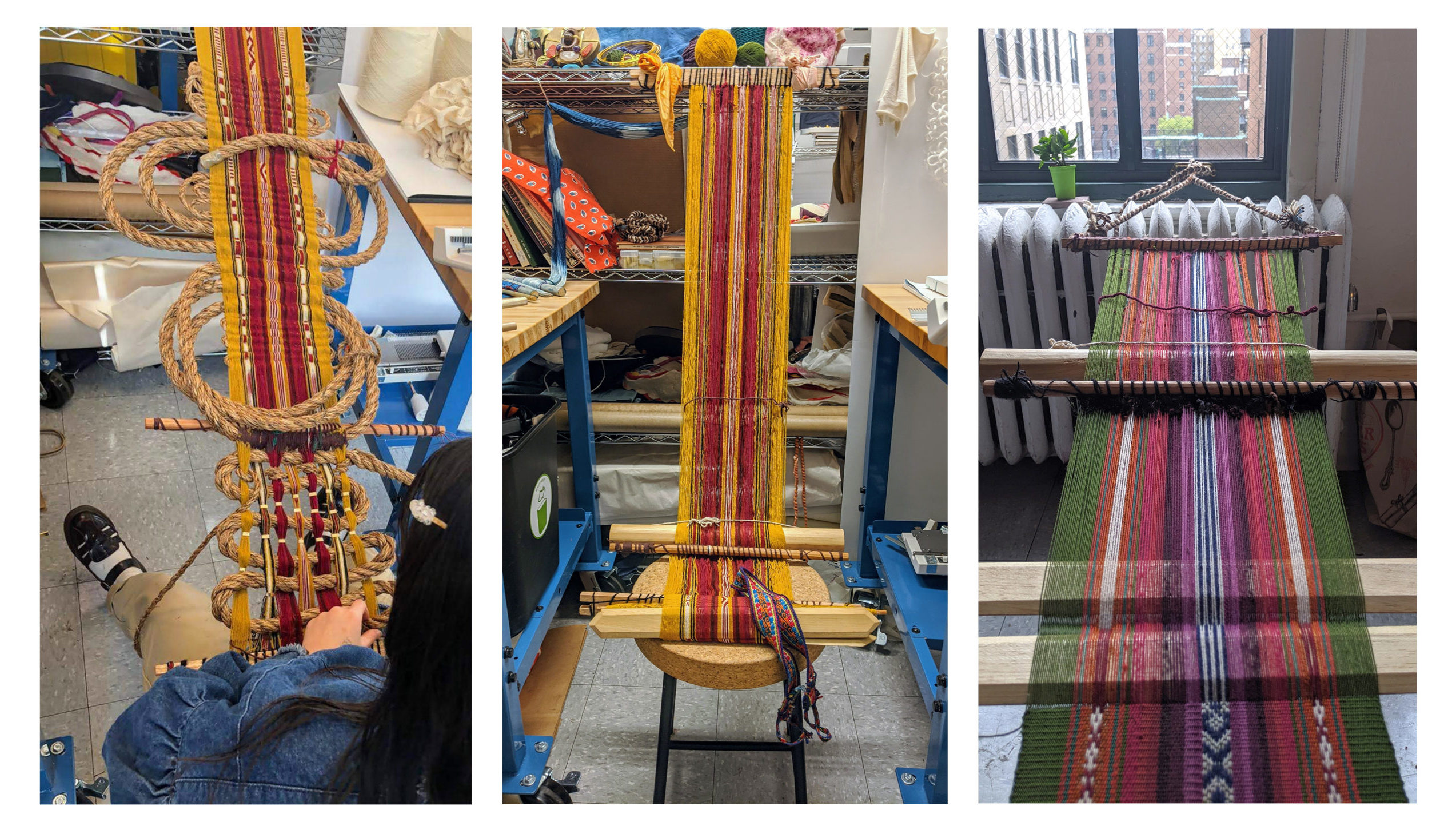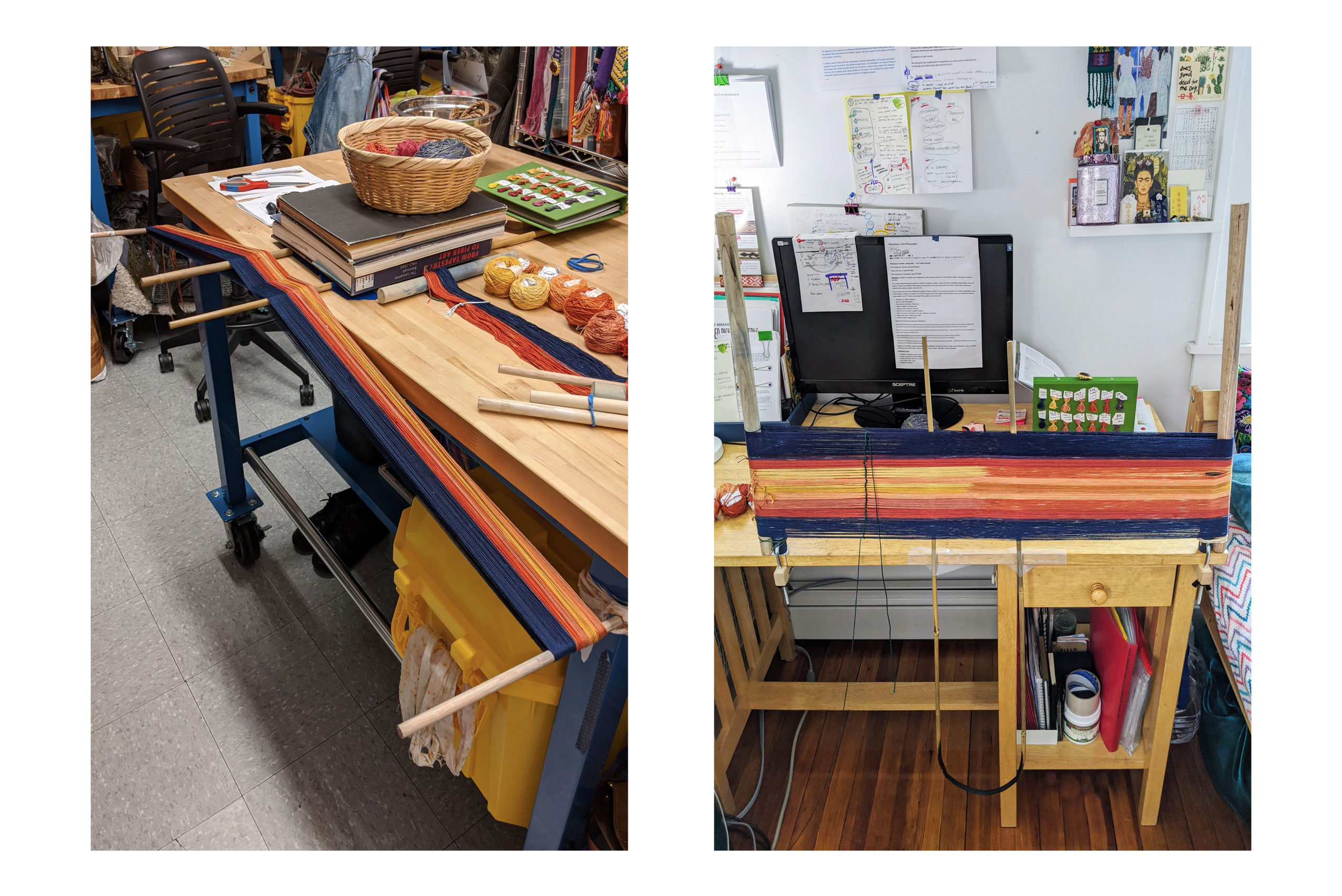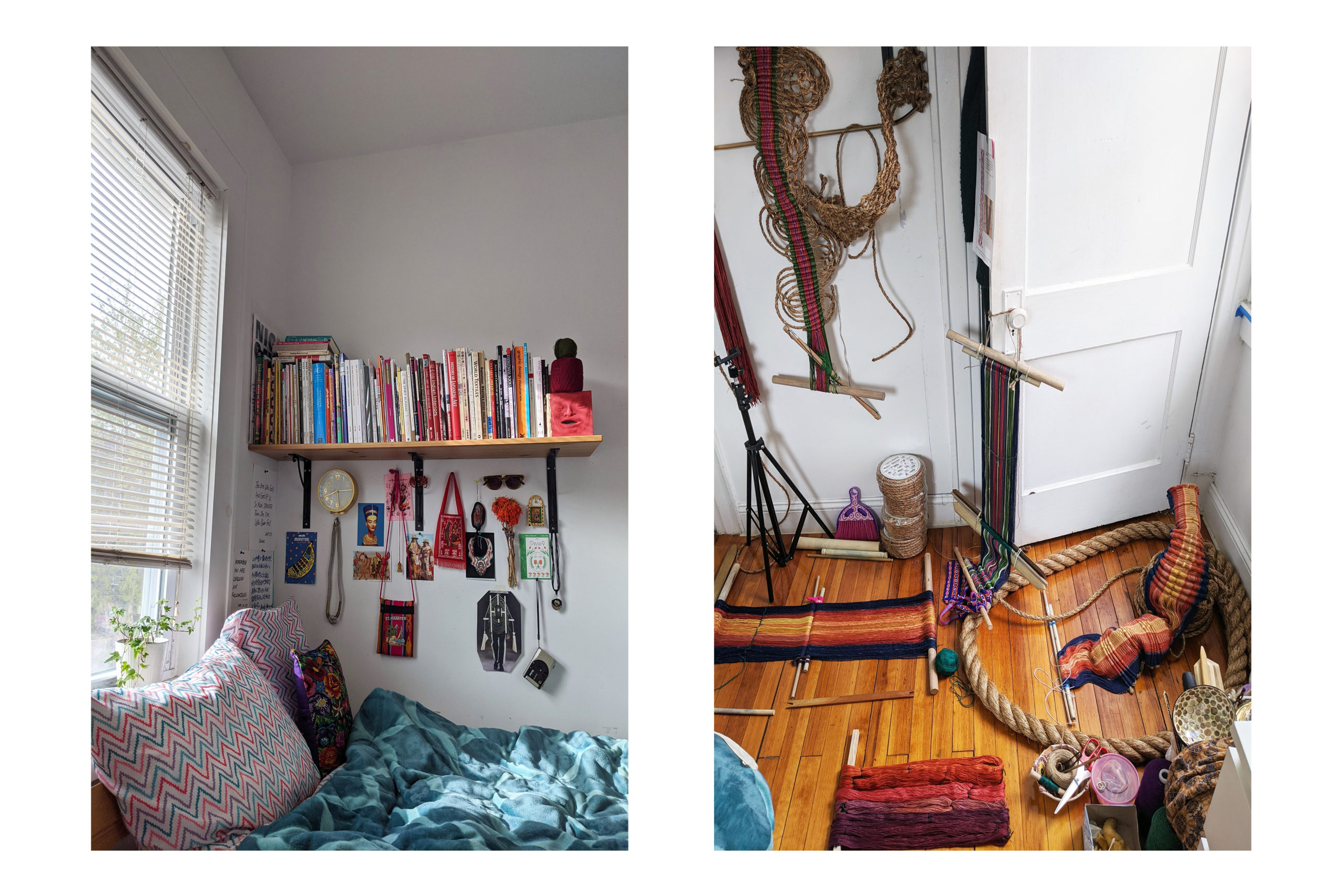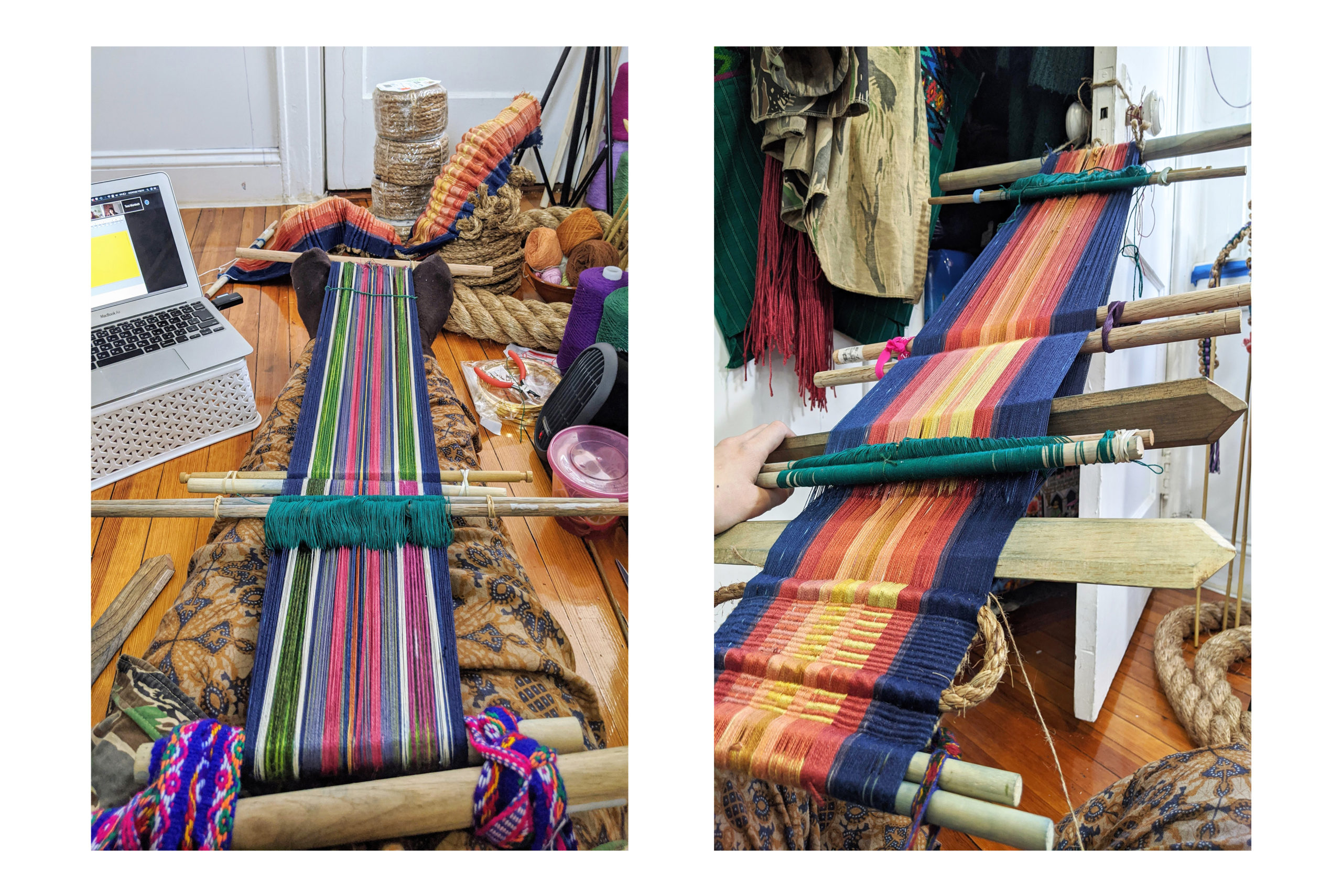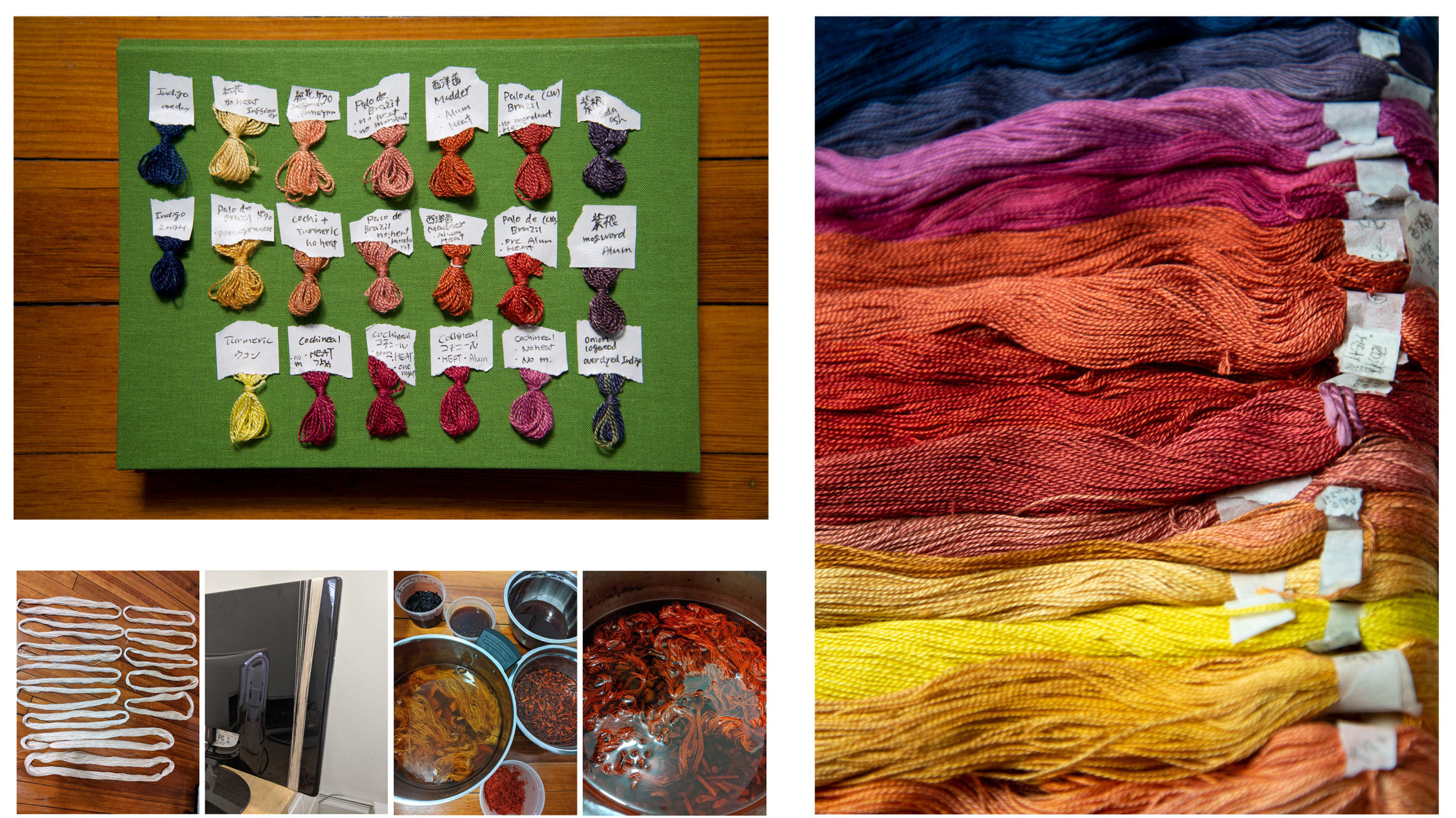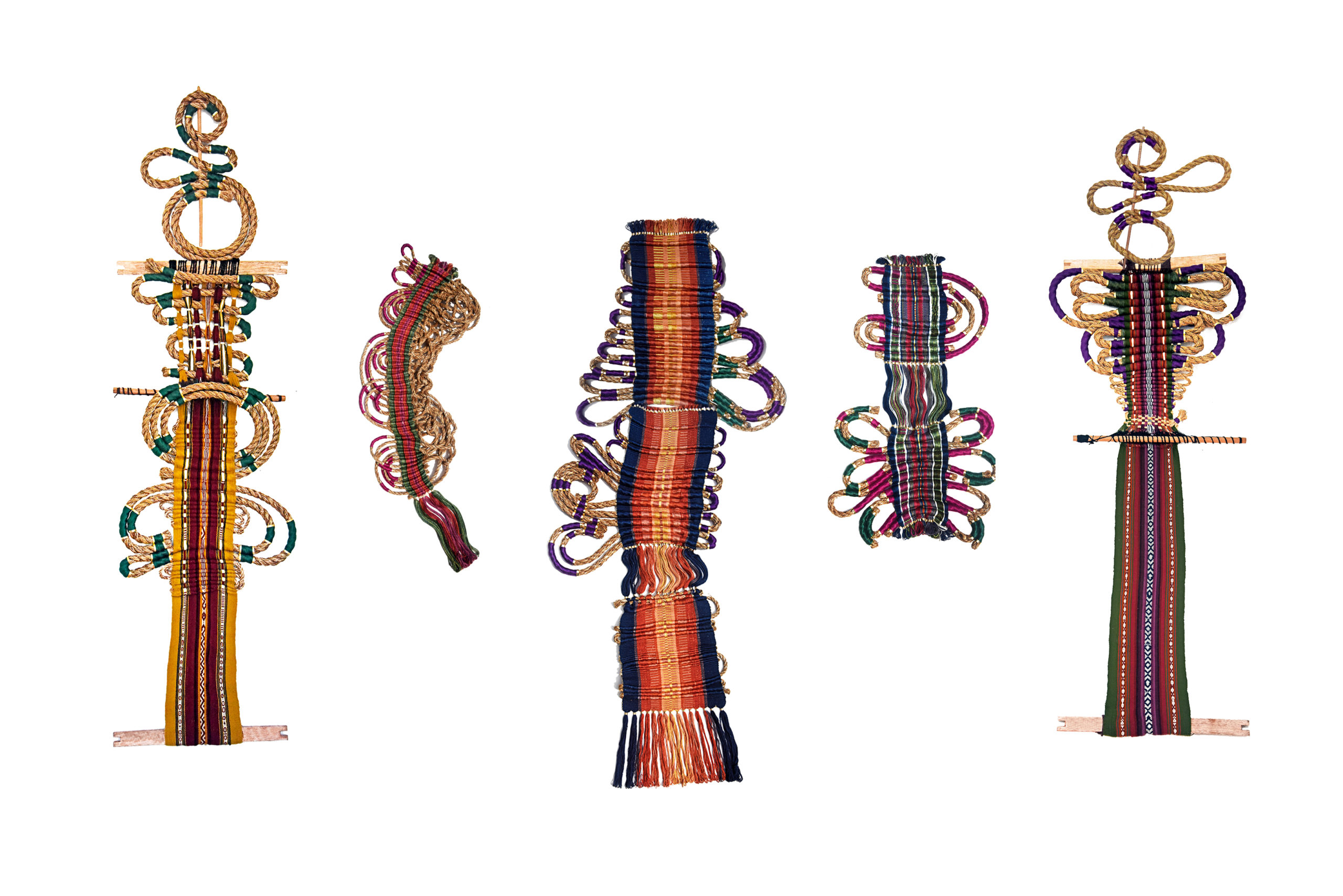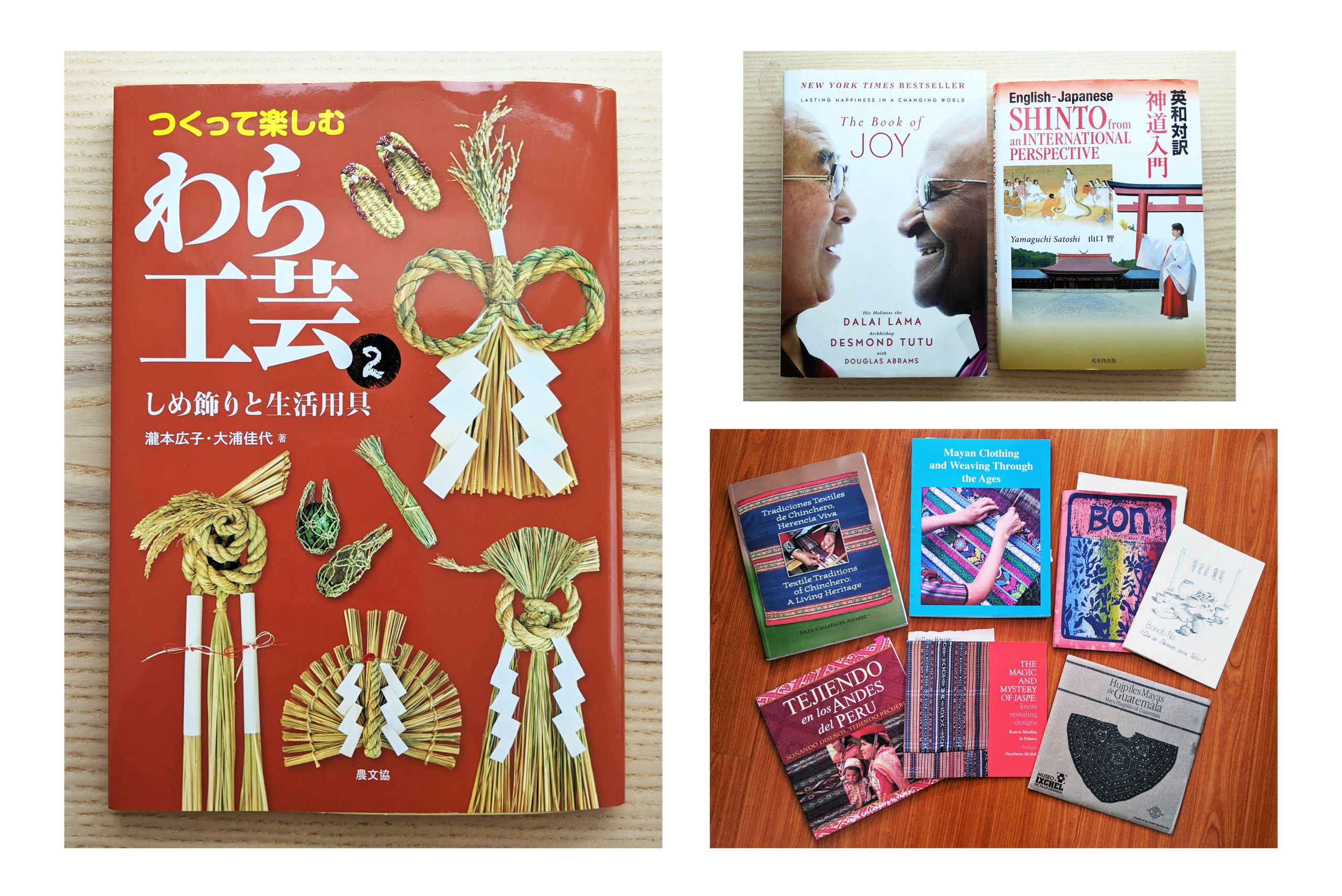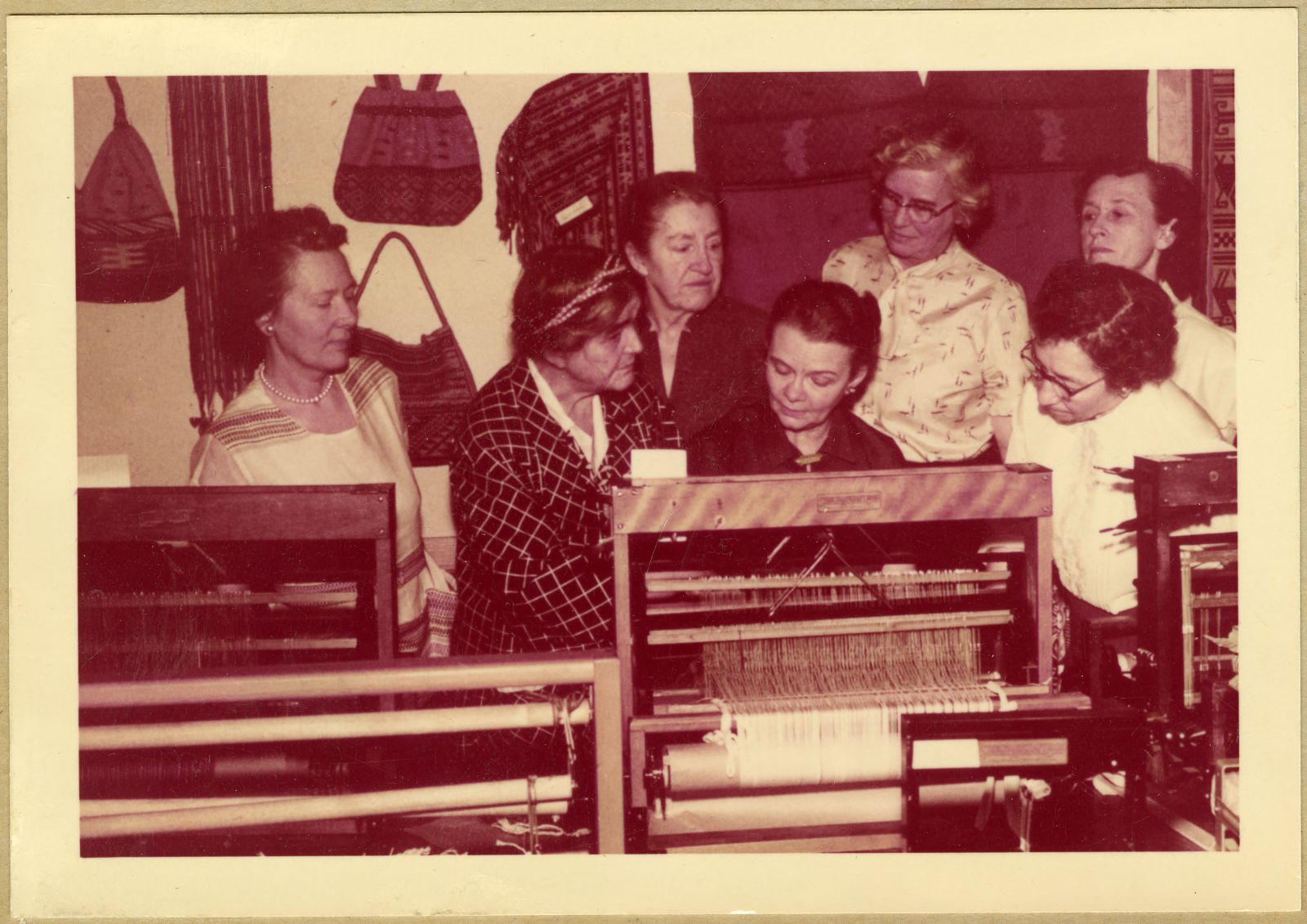For many of us, staying home has meant digging in to our crafts and dwelling in our work space. This series spotlights the spaces and inspirations of weavers, spinners, and dyers within and beyond the Weavers Guild MN community. We are grateful to New York-based weaver and dyer Terumi Saito for allowing us a glimpse into their practice.
WGM: Please tell us about yourself and introduce your practice.
Terumi Saito: I am a Textile Artist and Illustrator currently based in New York. I studied at the MFA Textiles program at Parsons School of Design. After my first year at the program, I applied and participated in an artist residency program in Peru (Arquetopia Foundation and International Artist Residency). I learned the Andean backstrap weaving technique from a local master teacher. I fell in love with this traditional weaving technique, which historically has been practiced mainly in Asia and Latin America. I continued practicing this technique after I came back to New York. Before my final semester, I planned to go to Guatemala for a research trip to develop my knowledge and skills further. I learned Guatemalan backstrap weaving and natural dyeing techniques with local maestros.
WGM: Please introduce us to your space.
TS: Since the lockdown, I have been working in my room in a shared apartment in Queens, New York. It was in the middle of thesis creation when the city, school, everything got shut down in March. When I had to relocate my workplace from the MFA studio to my tiny room, I had to be creative and utilize my space as much as I can.
WGM: What kind of loom do you use? What have you been working on lately?
TS: I have been experimenting with the backstrap weaving techniques and creating sculptures and tapestries, which can also be transformed into wearable art.
The backstrap weaving is a rudimentary weaving technique in which a set of warp yarns are held in tension between the weaver’s body and a stationary pole. In Peru and Guatemala, I could tie a backstrap loom to a thick stable pillar. However, I do not have a pillar in my room in New York; therefore, I usually tie a backstrap loom to my closet’s doorknob. When I had access to the MFA studio, the huge metal shelf and the central heater was a great place to tie them. During the quarantine, I also started using my feet to manipulate the tension of the loom. This method is practiced in Asia a lot, but I saw some people in Peru as well.
Figuring out the New York version of the backstrap weaving warping method was one of the tricky parts. In Peru, I used big metal poles outside of the artist residency studio. In Guatemala, I was able to use the master teachers’ warping board at her house. I did not have access to both in New York; therefore, I invented my warping method utilizing wood and bamboo sticks on the table.
WGM: What materials are you working with? Where have you found them?
TS: I do natural dyeing in a shared kitchen space. It is funny to see my roommates come and think I am making soup but throwing many yarns in the pot. I live in Woodside in Queens, where the neighborhood is such a diverse community. I have easy access to Asian and Latin American foods. After I visited Peru and Guatemala, grocery hauls in my neighborhood became more exciting. I can get some natural dyeing ingredients such as Brazil woods, Annatto, Saffron, Turmeric, Cal lime, etc. I combine them with other natural dyeing ingredients, which I bought in Japan and Peru.
WGM: How do you demonstrate your values in your materials or tools?
TS: I bring my personal experiences, stories, and materials together through my practice. By combining techniques from different cultures, I am proposing a contemporary hybrid craft art not only to preserve traditional techniques I learned but also to revive and honor them from the new perspective.
WGM: What or who influences your work? What was your inspiration or starting point?
TS: Books are always an essential resource for my inspiration. I have been fascinated by Japanese rice straw craft for quite some time. Historically, Japanese people considered the tying movement (“Musubu” in Japanese) as a sacred movement. There are two types of rice straw craft: “Shime Kazari,” which is a holy adornment, and the others are everyday objects. Exploring these beautiful crafts inspires me when I think about the structures and transformation process of my pieces.
WGM: What’s on your bookshelf lately?
TS: Reading books about spiritual and philosophical subjects are important for me to develop my concepts. Here are my book collections from Peru, Guatemala, and Mexico. It reminds me of all the precious times I spent in those countries.
WGM: What’s been on the speaker while you work? Music? Podcasts?
TS: Francis Bebey, Peruvian music, MUJI store BGM 🙂
Connect with Terumi:
Instagram: @terumi_saito_
Website: terumisaito.com

